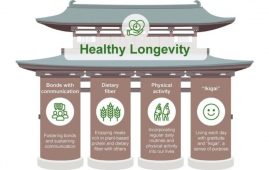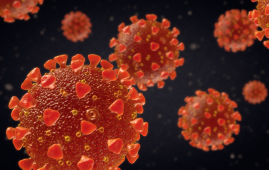

In a recent study published in the journal Cellular & Molecular Immunology, scientists from University College London reviewed current progress in developing a pan-coronavirus vaccine as well as the challenges involved in limiting the transmission of Middle East respiratory syndrome coronavirus (MERS-CoV), severe acute respiratory syndrome coronavirus 2 (SARS-CoV-2), and four other human coronaviruses.
Background
Despite the fact that the coronavirus disease 2019 (COVID-19) pandemic has been one of the most serious global public health crises in recent decades, global efforts to develop effective vaccines have highlighted the importance of understanding the immunological basis of developing resistance to respiratory viruses.
While the pandemic’s global morbidity and fatality rates have been startling, the COVID-19 vaccines have greatly slowed virus spread and avoided a considerable number of deaths.
Because coronaviruses have caused three major pandemics in the last twenty years, developing a pan-coronavirus is critical.
Pan-coronavirus vaccine
Current vaccines against SARS-CoV-2 and other coronaviruses, which largely consist of the antigenically variant spike glycoprotein, are species and even variant specific, eliciting minimal cross-reactive immune responses against other coronavirus variants or viral species.
A pan-coronavirus approach seeks to create a vaccine that protects against infections or severe disease caused by any coronavirus family virus.
The four seasonal human coronaviruses (HCoVs) OC43, 229E, NL63, HKU1, MERS-CoV, and SARS-CoV-2 account for a sizable share of the global economic health burden.
COVID-19 continues to pose long-term health challenges as a result of protracted coronavirus disease (long COVID), which affects many organ systems and causes persistent fatigue, myalgia, dyspnea, and neurological deficits, all of which have a negative influence on the individual’s life.
Many of these coronaviruses also have animal reservoirs, posing the ongoing threat of virulent versions emerging.
The Omicron variant of SARS-CoV-2, which contains novel mutations that help it evade existing vaccine-induced immunity, has also highlighted the need for a pan-coronavirus vaccine, which avoids the need for updated vaccines that can only combat each emergent variant, lowering development costs and providing broad-scale protection against coronaviruses.
Current vaccine challenges
The review addressed a full list of the present SARS-CoV-2 vaccine limitations that must be tackled throughout the development of pan-coronavirus vaccines. Limitations in blocking asymptomatic infections that continue to cause viral transmission, insufficient mounting of immune responses in non-seroconverters such as those with inborn immunological errors, lack of immune response durability, lack of mucosal administrative routes that can increase vaccine uptake in the population, and the limited cross-reactive immunity of existing vaccines are some of these challenges.
The review addressed a full list of the present SARS-CoV-2 vaccine limitations that must be tackled throughout the development of pan-coronavirus vaccines. Limitations in blocking asymptomatic infections that continue to cause viral transmission, insufficient mounting of immune responses in non-seroconverters such as those with inborn immunological errors, lack of immune response durability, lack of mucosal administrative routes that can increase vaccine uptake in the population, and the limited cross-reactive immunity of existing vaccines are some of these challenges.
Approaches to developing pan-coronavirus vaccines
Furthermore, the researchers went over certain pan-coronavirus vaccination methods that are either in the preclinical stages or are being studied clinically.
Numerous vaccines under preclinical development use ferritin or mosaic nanoparticles for vaccine administration and target either the receptor binding domain or the spike protein region of -coronavirus or sarbecovirus.
Another strategy is to use vaccine antigens that are either a consensus sequence or a string of conserved B and T-cell epitopes.
A ferritin nanoparticle platform, an enclosed vaccine containing a virus-like particle, a self-amplifying mRNA vaccine, and a live-attenuated vaccine against parainfluenza viruses are among the broadly reactive vaccines currently in clinical trials.
Conclusion
Overall, the researchers offered a comprehensive summary of the current state of pan-coronavirus vaccine development.
They also reviewed many of the drawbacks of currently available coronavirus vaccines that must be addressed in the aim of producing a pan-coronavirus vaccine capable of providing broad protection against a diverse spectrum of human coronaviruses.
For more information: Cankat, S., U, D. M., & Swadling, L. (2023). In search of a pan-coronavirus vaccine: next-generation vaccine design and immune mechanisms. Cellular & Molecular Immunology. doi:https://doi.org/10.1038/s41423023011168.
more recommended stories
 High-Intensity Training and Oxidative Stress Insights
High-Intensity Training and Oxidative Stress InsightsNew Evidence Linking High-Intensity Training and.
 Perinatal Mental Health Challenges Highlighted in New Study
Perinatal Mental Health Challenges Highlighted in New StudyMental Health Challenges in New Parents:.
 World Summit Outlines Core Principles for Healthy Longevity
World Summit Outlines Core Principles for Healthy LongevityWhy Healthy Longevity Demands a New.
 Cholesterol-Lowering Drugs May Help Reduce PFAS Levels
Cholesterol-Lowering Drugs May Help Reduce PFAS LevelsPer- and polyfluoroalkyl substances (PFAS) continue.
 AI ECG Model Outperforms Standard STEMI Triage
AI ECG Model Outperforms Standard STEMI TriageNovel AI ECG Model Outperforms Standard.
 WHO and EU Strengthen Digital Health in Africa
WHO and EU Strengthen Digital Health in AfricaThe World Health Organization (WHO) and.
 Quitting Smoking Slows Memory Decline, Study Finds
Quitting Smoking Slows Memory Decline, Study FindsQuitting smoking is linked to slower.
 Breakfast Skipping Linked to Metabolic Syndrome
Breakfast Skipping Linked to Metabolic SyndromeBreakfast Skippers May Face Metabolic Consequences.
 Study Reveals Cold May Impact SARS-CoV-2 Infection Rates
Study Reveals Cold May Impact SARS-CoV-2 Infection RatesThe Unexpected Protective Role of Rhinoviruses.
 Cancer Cells Learn to Self-Report: A New Frontier in Immunotherapy
Cancer Cells Learn to Self-Report: A New Frontier in ImmunotherapyHow a Drug Complex Enables Immune.

Leave a Comment